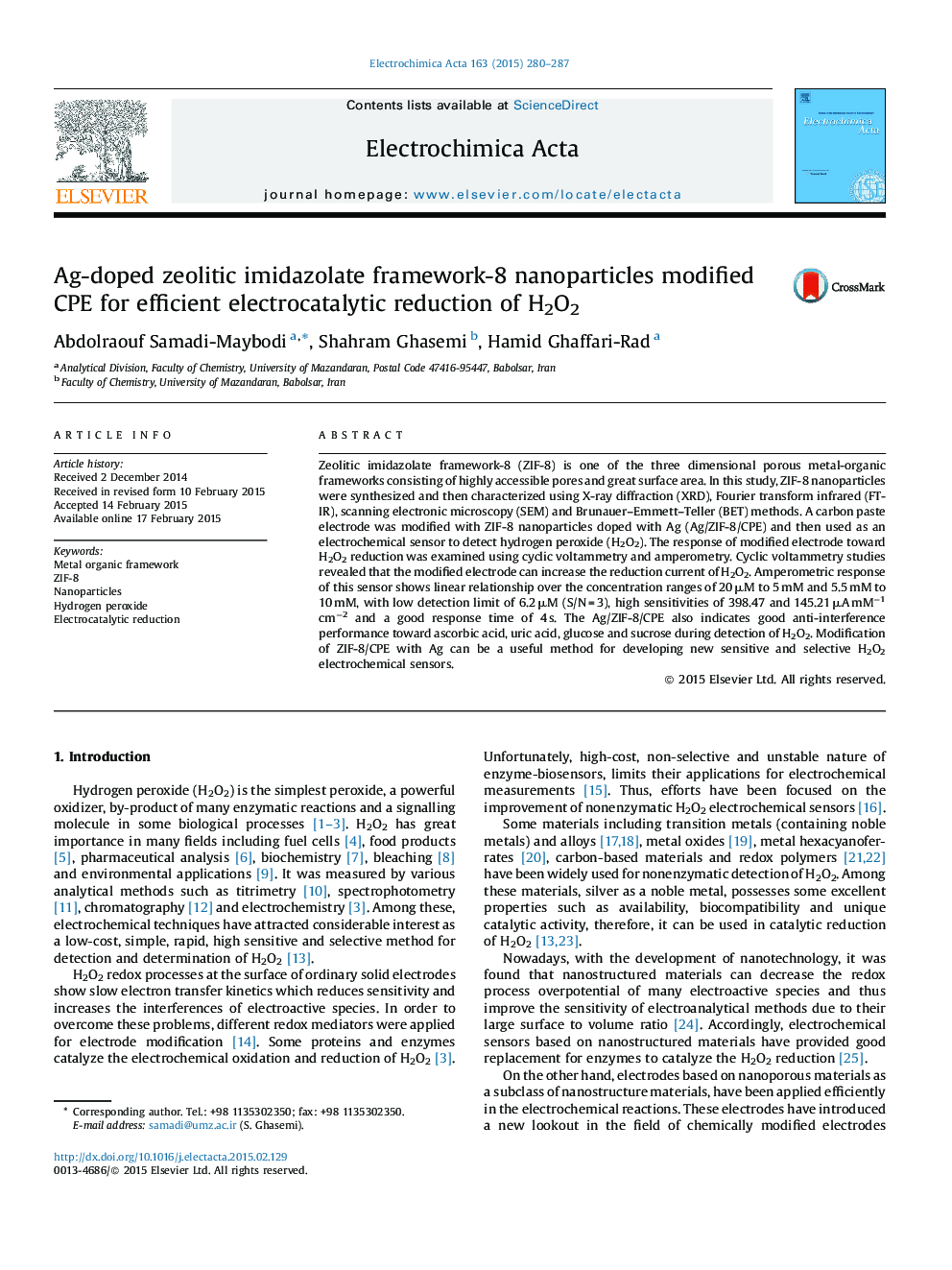| Article ID | Journal | Published Year | Pages | File Type |
|---|---|---|---|---|
| 184074 | Electrochimica Acta | 2015 | 8 Pages |
•ZIF-8 nanoparticles were synthesized using a simple room temperature method.•For the first time, Ag-doped ZIF-8 nanoparticles were used to detect H2O2.•Ag/ZIF-8/CPE shows excellent catalytic performance toward H2O2 reduction.•This sensor indicates wide linear range, low detection limit, high sensitivity and good selectivity.
Zeolitic imidazolate framework-8 (ZIF-8) is one of the three dimensional porous metal-organic frameworks consisting of highly accessible pores and great surface area. In this study, ZIF-8 nanoparticles were synthesized and then characterized using X-ray diffraction (XRD), Fourier transform infrared (FT-IR), scanning electronic microscopy (SEM) and Brunauer–Emmett–Teller (BET) methods. A carbon paste electrode was modified with ZIF-8 nanoparticles doped with Ag (Ag/ZIF-8/CPE) and then used as an electrochemical sensor to detect hydrogen peroxide (H2O2). The response of modified electrode toward H2O2 reduction was examined using cyclic voltammetry and amperometry. Cyclic voltammetry studies revealed that the modified electrode can increase the reduction current of H2O2. Amperometric response of this sensor shows linear relationship over the concentration ranges of 20 μM to 5 mM and 5.5 mM to 10 mM, with low detection limit of 6.2 μM (S/N = 3), high sensitivities of 398.47 and 145.21 μA mM−1 cm−2 and a good response time of 4 s. The Ag/ZIF-8/CPE also indicates good anti-interference performance toward ascorbic acid, uric acid, glucose and sucrose during detection of H2O2. Modification of ZIF-8/CPE with Ag can be a useful method for developing new sensitive and selective H2O2 electrochemical sensors.
Graphical abstractFigure optionsDownload full-size imageDownload as PowerPoint slide
